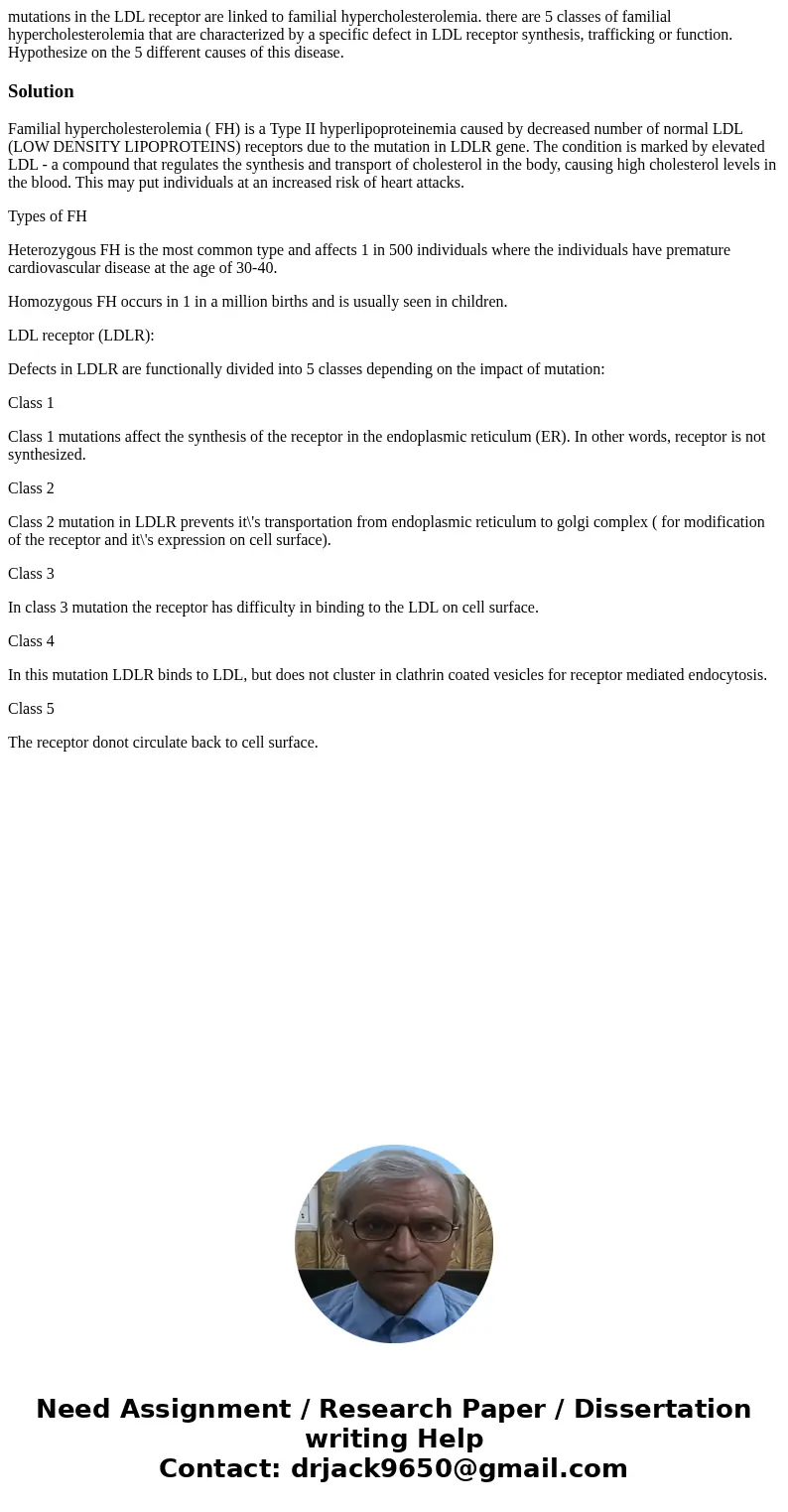mutations in the LDL receptor are linked to familial hyperch
mutations in the LDL receptor are linked to familial hypercholesterolemia. there are 5 classes of familial hypercholesterolemia that are characterized by a specific defect in LDL receptor synthesis, trafficking or function. Hypothesize on the 5 different causes of this disease.
Solution
Familial hypercholesterolemia ( FH) is a Type II hyperlipoproteinemia caused by decreased number of normal LDL (LOW DENSITY LIPOPROTEINS) receptors due to the mutation in LDLR gene. The condition is marked by elevated LDL - a compound that regulates the synthesis and transport of cholesterol in the body, causing high cholesterol levels in the blood. This may put individuals at an increased risk of heart attacks.
Types of FH
Heterozygous FH is the most common type and affects 1 in 500 individuals where the individuals have premature cardiovascular disease at the age of 30-40.
Homozygous FH occurs in 1 in a million births and is usually seen in children.
LDL receptor (LDLR):
Defects in LDLR are functionally divided into 5 classes depending on the impact of mutation:
Class 1
Class 1 mutations affect the synthesis of the receptor in the endoplasmic reticulum (ER). In other words, receptor is not synthesized.
Class 2
Class 2 mutation in LDLR prevents it\'s transportation from endoplasmic reticulum to golgi complex ( for modification of the receptor and it\'s expression on cell surface).
Class 3
In class 3 mutation the receptor has difficulty in binding to the LDL on cell surface.
Class 4
In this mutation LDLR binds to LDL, but does not cluster in clathrin coated vesicles for receptor mediated endocytosis.
Class 5
The receptor donot circulate back to cell surface.

 Homework Sourse
Homework Sourse